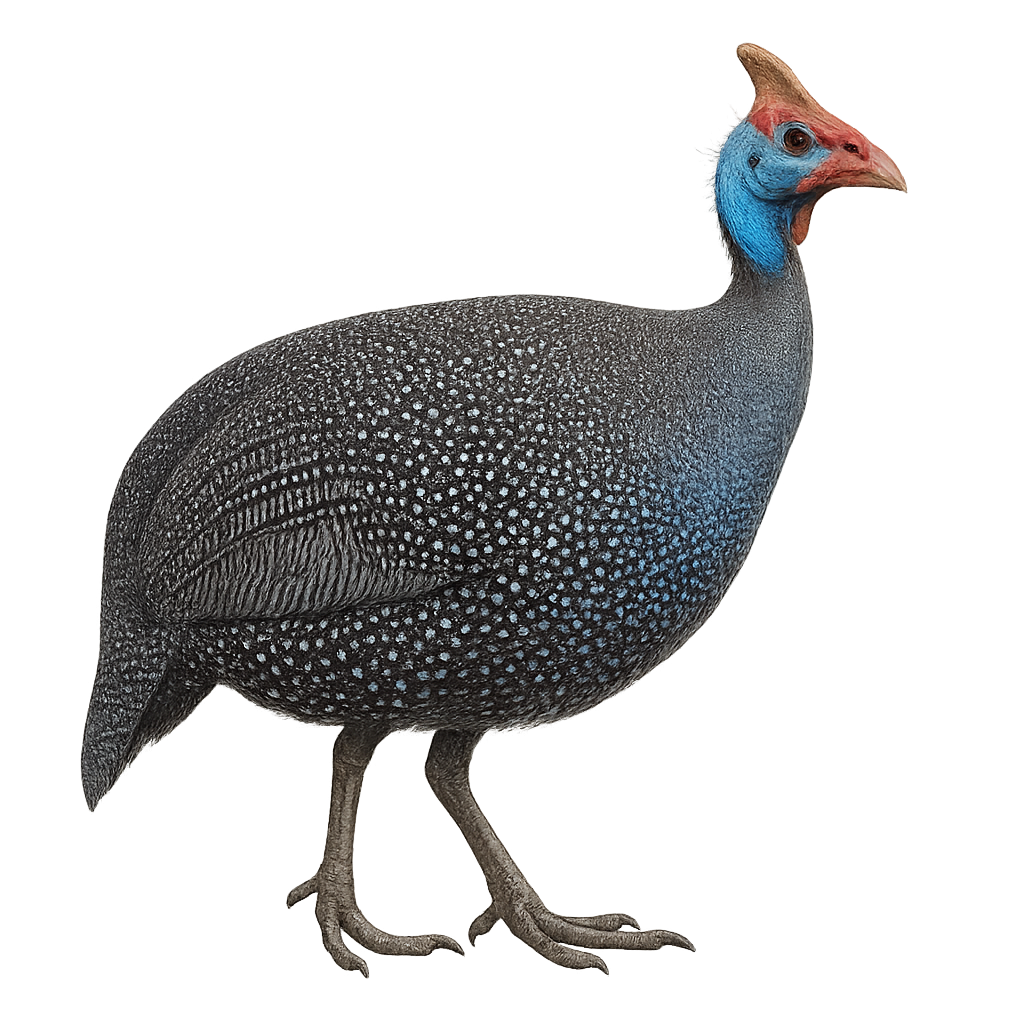Your wildlife photography guide.
Explore the helmeted guineafowl in detail, study its behavior, prepare your shots.
Where to observe and photograph the helmeted guineafowl in the wild
Learn where and when to spot the helmeted guineafowl in the wild, how to identify the species based on distinctive features, and what natural environments it inhabits. The WildlifePhotographer app offers tailored photography tips that reflect the helmeted guineafowl’s behavior, helping you capture better wildlife images. Explore the full species profile for key information including description, habitat, active periods, and approach techniques.
Helmeted Guineafowl
Scientific name: Numida meleagris

IUCN Status: Least Concern
Family: NUMIDIDAE
Group: Birds
Sensitivity to human approach: Suspicious
Minimum approach distance: 10 m
Courtship display: April to June
Incubation: 26-28 jours
Hatchings: May to July
Habitat:
Savannas, open forests, grasslands
Activity period :
Primarily active during the day, with peak activity in the morning and late afternoon.
Identification and description:
The helmeted guineafowl, Numida meleagris, is a terrestrial bird native to sub-Saharan Africa. It is easily identified by its black plumage speckled with white and its bare head topped with a bony casque. This social bird lives in groups and feeds mainly on seeds, insects, and small invertebrates. Known for its adaptability, it thrives in various habitats, from savannas to open forests. It plays a crucial role in controlling pest insect populations. Although often domesticated for its meat and eggs, it remains suspicious in the wild.
Recommended lens:
400 mm – adjust based on distance, desired framing (portrait or habitat), and approach conditions.
Photography tips:
To photograph the helmeted guineafowl, it is advisable to use a telephoto lens of at least 400mm to capture detailed images without disturbing the bird. Look for open areas such as savannas or grasslands where they often feed in groups. Be patient and discreet, as these birds can be suspicious. Take advantage of morning or afternoon light to get shots with optimal natural lighting.
The WildlifePhotographer App is coming soon!
Be the first to explore the best nature spots, track rutting seasons, log your observations, and observe more wildlife.
Already 1 439 wildlife lovers subscribed worldwide

